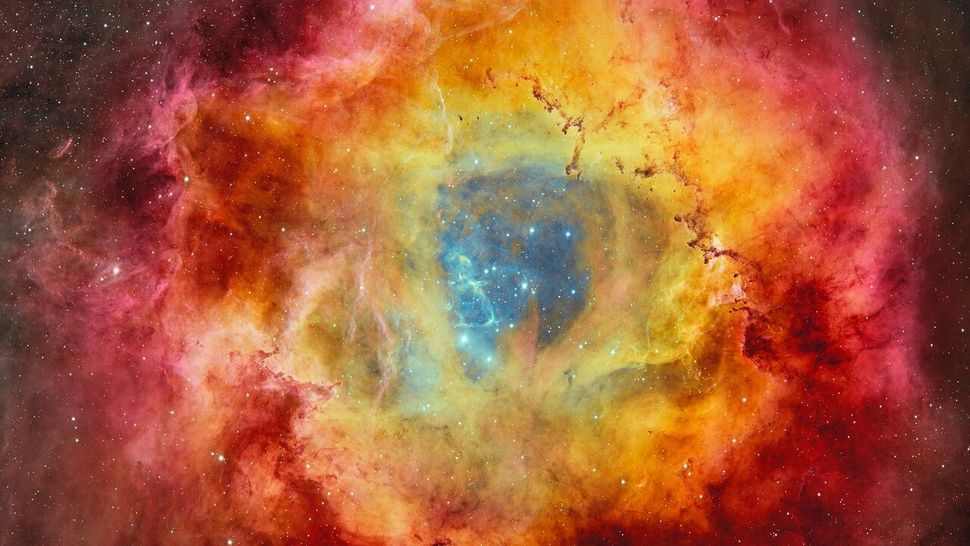A star-studded Rosette nebula brings gorgeous color to the cosmos
By Keith Cooper
published 12 hours ago
This stunning portrait of a star-forming nebula is a throwback to the birth of our own sun, 4.6 billion years ago.

A gaseous section of space with reddish hues on the outeide, which lead to yellowish ones within, which leads to a blue core.
The beautiful Rosette Nebula, imaged by the Dark Energy Camera. (Image credit: CTIO/NOIRLab/DOE/NSF/AURA)
The Rosette Nebula blossoms in deep space, captured in this wonderful image taken by the high-resolution Dark Energy Camera, illustrating how hot, bright stars at the heart of the Rosette are energizing the molecular gas around them.
The Rosette Nebula is a welcome sight for astrophotographers as it rises into the northern hemisphere's winter sky in the constellation of Monoceros, the Unicorn, just to the southeast of Orion and boxed inside the Winter Triangle made from the stars Sirius, Procyon and Betelgeuse. Located about 5,000 light-years away, the Rosette Nebula is ephemeral when viewed through the telescope eyepiece, a ghostly ring on the very edge of detectability because of its low-surface brightness. However, it really struts its stuff when imaged in long exposures, none more so than here, in this view captured by the Dark Energy Camera (DECam) mounted on the four-meter Victor M. Blanco Telescope at the Cerro Tololo Inter-American Observatory in Chile.
The 500-megapixel resolution of the DECam shows the Rosette in all its splendor. The reason for its name is obvious. Unlike many deep-sky objects, the Rosette Nebula actually looks like what it is named for: a huge wreath of gas and dust, 130 light-years across.
The Rosette is a region of star formation. At its heart is a star cluster, NGC 2244, which contains several hot, blue, massive young stars; unlike its surrounding nebula, the star cluster is visible to amateur astronomers through binoculars or even to the unaided eye from a dark site.
More:
https://www.space.com/rosette-nebula-star-studded
